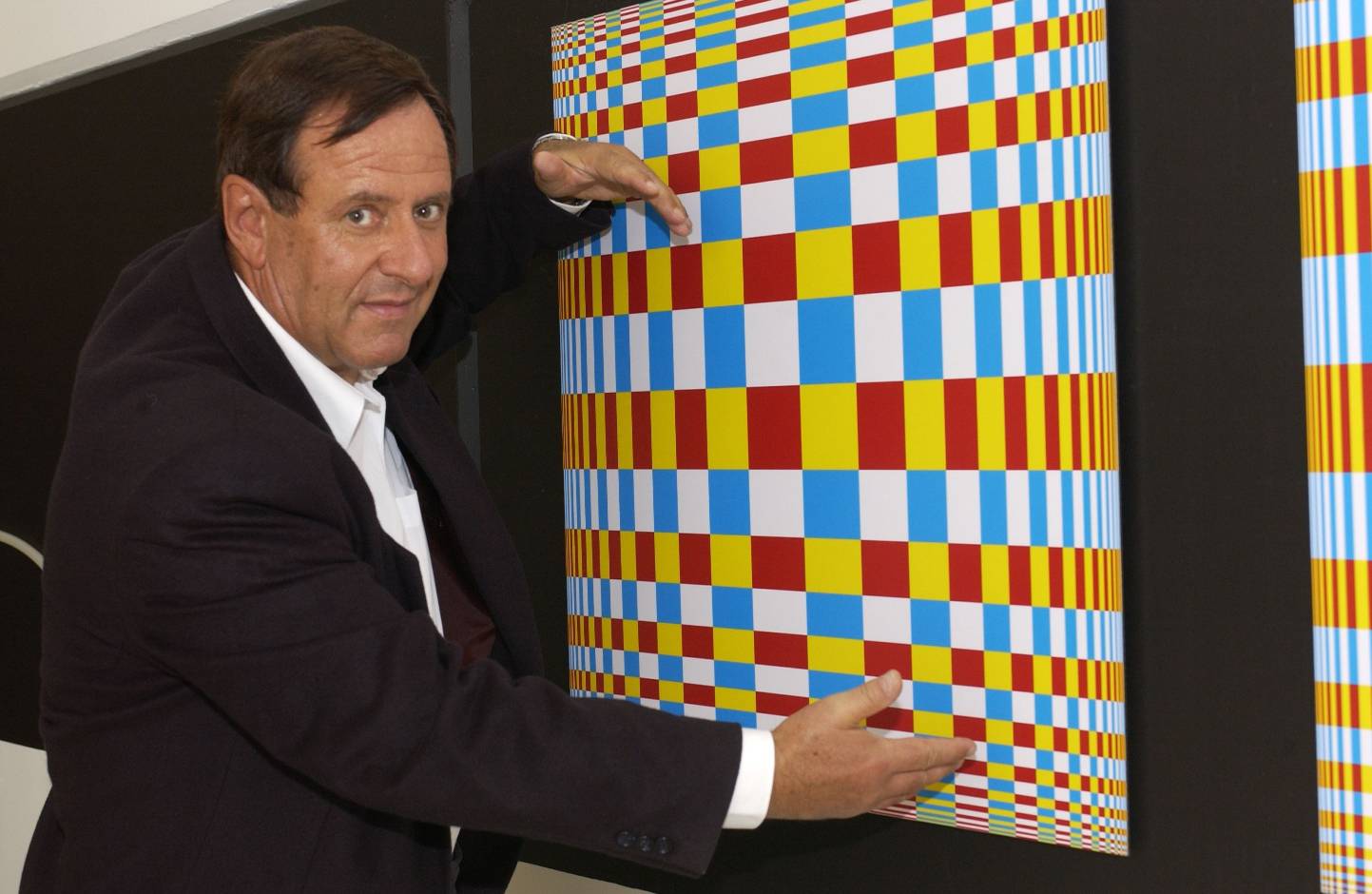
Jürg Nänni worked in various positions as a teacher and researcher at the University of Applied Sciences and Arts of Northwestern Switzerland (FHNW) in Brugg, starting in 1979 for 35 years.
Here he discovered the world of images and colors, which he developed with the computer according to mathematical rules. This was the place for creative collaboration with his colleagues Hans Knuchel, Peter Bosshard Schneider and Walter Schmidli, from which the Laboratory for Design between Art and Technology blelb emerged in 1999.
Mathematics and Art
After training as a physicist at the ETH, Jürg Nänni together with Hans Knuchel began experimenting with the three primary colors blue, yellow, red, as well as black and white. In 1991, they presented the results of their first phase of work in the book BLAU. YELLOW. RED. It contains both strictly geometric color pictures and pictures with fine chaotic patterns created by random generators. Jürg and Hans were interested in special color effects:
- the Bezold effect, which provides the explanation for the fact that adjacent colors change in perception,
- the neon effect, in which perception creates an image in the brain that does not exist in the eye.
In a second phase of their collaboration, they became interested in three-dimensional image effects, how two very slightly different two-dimensional images are combined in the brain to form a three-dimensional image. The book Seesaw from 1994 shows a series of these works and explains their effects.
In a third phase, both artists worked on the moiré effect, which triggers an apparent movement from two superimposed grids in the brain. In 1997, they presented a large exhibition on this subject in the grand hall of the Haller building at the FHNW in Brugg. In 1997, Jürg Nänni published his findings the book … and don’t break a leg …
In the fourth phase, Jürg Nänni essentially works alone. On the one hand, he spent years creating his opus magnum Visual Perception, which was published in 2008. On the other hand, he went beyond his narrow palette of three primary colors and began to use a broad chromatic spectrum. At the same time, the previous orthogonal image geometry exploded and made way for spiral, wave-shaped and free arrangements of surprising structures in the image.
